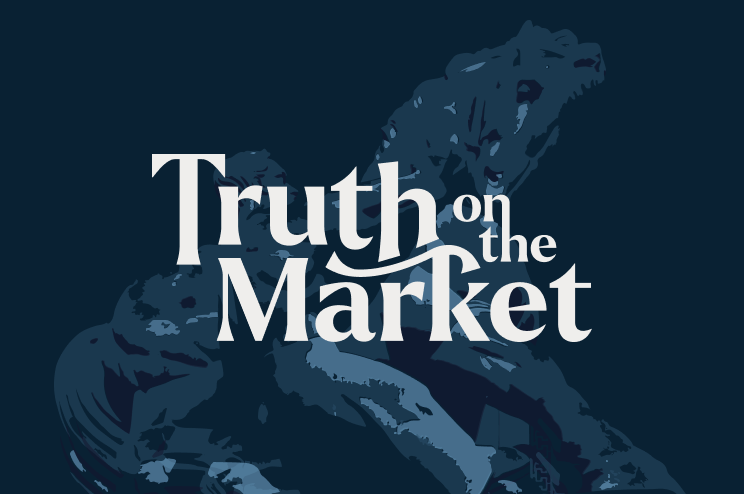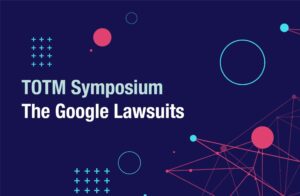Showing results for: “digital markets act”
The Earn IT Act and the Institutional Limits of Congress
As the initial shock of the COVID quarantine wanes, the Techlash waxes again bringing with it a raft of renewed legislative proposals to take on Big Tech. Prominent among these is the EARN IT Act (the Act), a bipartisan proposal to create a new national commission responsible for proposing best practices designed to mitigate the ... The Earn IT Act and the Institutional Limits of Congress
First Amendment Conflict of Visions Redux: The Case of Facebook’s Oversight Board and the Threat of Antitrust Action
In the wake of the launch of Facebook’s content oversight board, Republican Senator Josh Hawley and FCC Commissioner Brendan Carr, among others, have taken to Twitter to levy criticisms at the firm and, in the process, demonstrate just how far the Right has strayed from its first principles around free speech and private property. For ... First Amendment Conflict of Visions Redux: The Case of Facebook’s Oversight Board and the Threat of Antitrust Action
The Negative Externalities of Protecting Privacy
The public policy community’s infatuation with digital privacy has grown by leaps and bounds since the enactment of GDPR and the CCPA, but COVID-19 may leave the most enduring mark on the actual direction that privacy policy takes. As the pandemic and associated lockdowns first began, there were interesting discussions cropping up about the inevitable ... The Negative Externalities of Protecting Privacy
Amazon is Not Welcome in France. And That Reflects French Double Standards
As the COVID-19 outbreak led to the shutdown of many stores, e-commerce and brick-and-mortar shops have been stepping up efforts to facilitate online deliveries while ensuring their workers’ safety. Without online retail, lockdown conditions would have been less tolerable, and confinement measures less sustainable. Yet a recent French court’s ruling on Amazon seems to be ... Amazon is Not Welcome in France. And That Reflects French Double Standards
Let’s (NOT) Stop All the Mergers: The Case for Letting the Agencies Do Their Jobs
Never let a crisis go to waste, or so they say. In the past two weeks, some of the same people who sought to stop mergers and acquisitions during the bull market took the opportunity of the COVID-19 pandemic and the new bear market to call to ban M&A. On Friday, April 24th, Rep. David ... Let’s (NOT) Stop All the Mergers: The Case for Letting the Agencies Do Their Jobs
There Aren’t Luddites in a Quarantine
Nellie Bowles, a longtime critic of tech, recently had a change of heart about tech, which she relayed in the New York Times: Before the coronavirus, there was something I used to worry about. It was called screen time. Perhaps you remember it. I thought about it. I wrote about it. A lot. I would ... There Aren’t Luddites in a Quarantine
Amazon’s tightrope: Balancing Innovation and competition on Amazon’s Marketplace
The Wall Street Journal reports that Amazon employees have been using data from individual sellers to identify products to compete with with its own ‘private label’ (or own-brand) products, such as AmazonBasics, Presto!, and Pinzon. It’s implausible that this is an antitrust problem, as some have suggested. It’s extremely common for retailers to sell their ... Amazon’s tightrope: Balancing Innovation and competition on Amazon’s Marketplace
Paid to Stay Home? An Entirely Intended Consequence of the COVID-19 Stimulus
In an earlier TOTM post, we argued as the economy emerges from the COVID-19 crisis, perhaps the best policy would allow properly motivated firms and households to themselves balance the benefits, costs, and risks of transitioning to “business as usual.” Sometimes, however, well meaning government policies disrupt the balance and realign motivations. Our post contrasted ... Paid to Stay Home? An Entirely Intended Consequence of the COVID-19 Stimulus
The CARES Act and the Tantalizing Promise of a Universal Basic Income
This week, Americans began receiving cold, hard cash from the government. Meant to cushion the economic fallout of Covid-19, the CARES Act provides households with relief payments of up to $1200 per adult and $500 per child. As we have written elsewhere, direct cash transfers are the simplest, least paternalistic, and most efficient way to ... The CARES Act and the Tantalizing Promise of a Universal Basic Income
Coronavirus treatments and vaccines: Patents … or a Prize?
Observers on TOTM and elsewhere have pointed out the importance of preserving patent rights as pharmaceutical and biotechnology companies pursue development of treatments for, and better vaccines against, Covid-19. As the benefits of these treatments could reach into the trillions of dollars (see here for a casual estimate and here for a more serious one), ... Coronavirus treatments and vaccines: Patents … or a Prize?
Cooperation, Competition, and COVID-19
Cooperation is the basis of productivity. The war of all against all is not a good model for any economy. Who said it—a rose-emoji Twitter Marxist, or a card-carrying member of the laissez faire Chicago School of economics? If you guessed the latter, you’d be right. Frank Easterbrook penned these words in an antitrust ... Cooperation, Competition, and COVID-19
Privacy in the Time of Covid-19
I type these words while subject to a stay-at-home order issued by West Virginia Governor James C. Justice II. “To preserve public health and safety, and to ensure the healthcare system in West Virginia is capable of serving all citizens in need,” I am permitted to leave my home only for a limited and precisely ... Privacy in the Time of Covid-19






